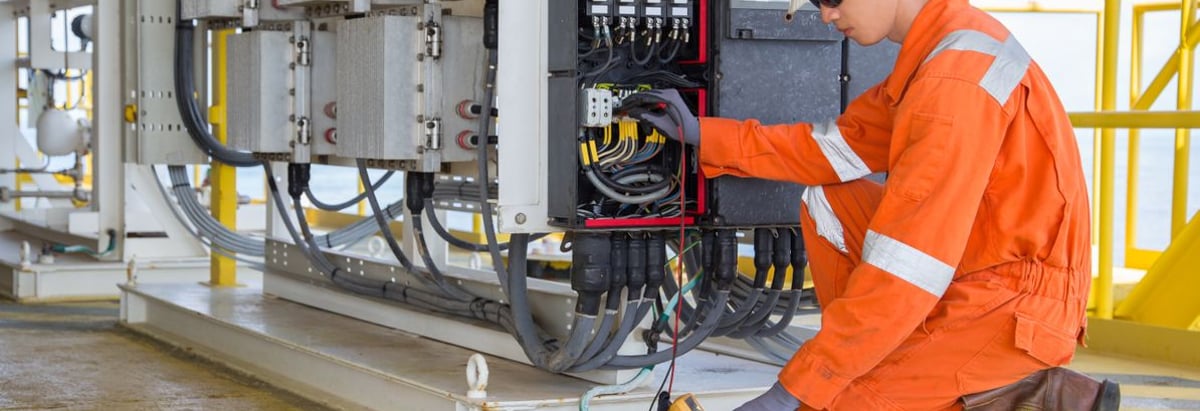Stock Analysis
- Denmark
- /
- Electrical
- /
- CPSE:VWS
There Are Reasons To Feel Uneasy About Vestas Wind Systems' (CPH:VWS) Returns On Capital

Finding a business that has the potential to grow substantially is not easy, but it is possible if we look at a few key financial metrics. Ideally, a business will show two trends; firstly a growing return on capital employed (ROCE) and secondly, an increasing amount of capital employed. If you see this, it typically means it's a company with a great business model and plenty of profitable reinvestment opportunities. However, after briefly looking over the numbers, we don't think Vestas Wind Systems (CPH:VWS) has the makings of a multi-bagger going forward, but let's have a look at why that may be.
Understanding Return On Capital Employed (ROCE)
Just to clarify if you're unsure, ROCE is a metric for evaluating how much pre-tax income (in percentage terms) a company earns on the capital invested in its business. Analysts use this formula to calculate it for Vestas Wind Systems:
Return on Capital Employed = Earnings Before Interest and Tax (EBIT) ÷ (Total Assets - Current Liabilities)
0.0099 = €84m ÷ (€23b - €14b) (Based on the trailing twelve months to March 2024).
So, Vestas Wind Systems has an ROCE of 1.0%. In absolute terms, that's a low return and it also under-performs the Electrical industry average of 13%.
View our latest analysis for Vestas Wind Systems
Above you can see how the current ROCE for Vestas Wind Systems compares to its prior returns on capital, but there's only so much you can tell from the past. If you'd like to see what analysts are forecasting going forward, you should check out our free analyst report for Vestas Wind Systems .
The Trend Of ROCE
When we looked at the ROCE trend at Vestas Wind Systems, we didn't gain much confidence. Around five years ago the returns on capital were 19%, but since then they've fallen to 1.0%. However it looks like Vestas Wind Systems might be reinvesting for long term growth because while capital employed has increased, the company's sales haven't changed much in the last 12 months. It's worth keeping an eye on the company's earnings from here on to see if these investments do end up contributing to the bottom line.
On a separate but related note, it's important to know that Vestas Wind Systems has a current liabilities to total assets ratio of 62%, which we'd consider pretty high. This can bring about some risks because the company is basically operating with a rather large reliance on its suppliers or other sorts of short-term creditors. Ideally we'd like to see this reduce as that would mean fewer obligations bearing risks.
The Bottom Line On Vestas Wind Systems' ROCE
To conclude, we've found that Vestas Wind Systems is reinvesting in the business, but returns have been falling. Since the stock has gained an impressive 46% over the last five years, investors must think there's better things to come. But if the trajectory of these underlying trends continue, we think the likelihood of it being a multi-bagger from here isn't high.
If you're still interested in Vestas Wind Systems it's worth checking out our FREE intrinsic value approximation for VWS to see if it's trading at an attractive price in other respects.
For those who like to invest in solid companies, check out this free list of companies with solid balance sheets and high returns on equity.
New: Manage All Your Stock Portfolios in One Place
We've created the ultimate portfolio companion for stock investors, and it's free.
• Connect an unlimited number of Portfolios and see your total in one currency
• Be alerted to new Warning Signs or Risks via email or mobile
• Track the Fair Value of your stocks
Have feedback on this article? Concerned about the content? Get in touch with us directly. Alternatively, email editorial-team (at) simplywallst.com.
This article by Simply Wall St is general in nature. We provide commentary based on historical data and analyst forecasts only using an unbiased methodology and our articles are not intended to be financial advice. It does not constitute a recommendation to buy or sell any stock, and does not take account of your objectives, or your financial situation. We aim to bring you long-term focused analysis driven by fundamental data. Note that our analysis may not factor in the latest price-sensitive company announcements or qualitative material. Simply Wall St has no position in any stocks mentioned.
Have feedback on this article? Concerned about the content? Get in touch with us directly. Alternatively, email editorial-team@simplywallst.com
About CPSE:VWS
Vestas Wind Systems
Engages in the design, manufacture, installation, and services of wind turbines the United States, Denmark, and internationally.

